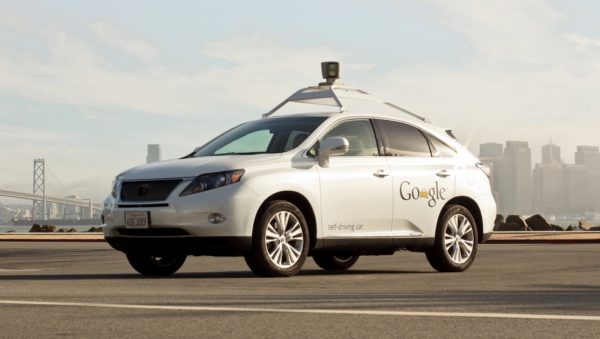Google on Monday said that it has made major progress in how well its self-driving cars can handle not just relatively straightforward freeways but also the more complicated leafy suburbs of Mountain View, Calif., where Google is based.
“We still have lots of problems to solve, including teaching the car to drive more streets in Mountain View before we tackle another town,” said Chris Urmson, director of Google’s self-driving car project, in a blog post. “But thousands of situations on city streets that would have stumped us two years ago can now be navigated autonomously.”
In an accompanying YouTube video, Google demonstrates some of the circumstances its self-driving cars now can handle: bicyclists signaling to move across a lane of traffic, railroad crossings, parked cars protruding into the lane of traffic, multiple pedestrians and cyclists entering an intersection and orange traffic cones around a construction zone.
“A mile of city driving is much more complex than a mile of freeway driving, with hundreds of different objects moving according to different rules of the road in a small area,” Urmson said. “We’ve improved our software so it can detect hundreds of distinct objects simultaneously — pedestrians, buses, a stop sign held up by a crossing guard or a cyclist making gestures that indicate a possible turn. A self-driving vehicle can pay attention to all of these things in a way that a human physically can’t — and it never gets tired or distracted.”
Although plenty of people are eager for self-driving cars to arrive, there will be resistance, too, from people who don’t trust the technology, who don’t want to relinquish the feeling of control or, depending on how much of a premium is charged, who can’t afford it.
Ultimately, Google and its comrades in autonomous driving will prevail, according to analyst firm IHS. It forecast in January that sales of self-driving cars will rise from 230,000 in 2025 to 11.8 million in 2035, and that all cars on the road in 2050 will be self-driving.
“Accident rates will plunge to near zero for self-driving cars [SDCs], although other cars will crash into SDCs, but as the market share of SDCs on the highway grows, overall accident rates will decline steadily. Traffic congestion and air pollution per car should also decline because SDCs can be programmed to be more efficient in their driving patterns,” said IHS analyst Egil Juliussen, principal analyst, in a statement.
Read the full story at cnet.com



